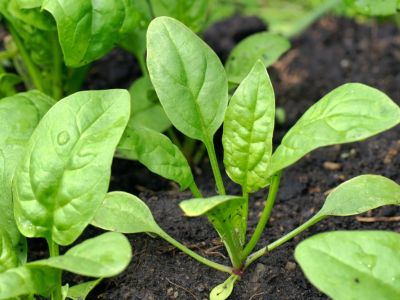What Causes Spinach Stress?
Spinach has a host of uses and is packed with powerful antioxidants and vitamins. It even has a ton of fiber and protein, making it a perfect ingredient in many cuisines. As an added bonus, it grows quickly from seed to harvest. But what do you do about stressed spinach plants? These cool season greens can suffer from several cultural problems. Managing spinach stress when plants are young is crucial to harvesting a healthy, nutritious crop. Spinach enjoys the cooler days of spring or in warmer climates, the crispness of fall. Better growth and flavor result in cooler temperatures. Many spinach physiological problems are the result of plants that are in excess heat or sun. The plants also need well-draining soil to prevent rot and plenty of nitrogen to form the delicious leaves. Pests are particularly taken with spinach. The following insects find spinach a buffet favorite:
Leaf miners Aphids Flea beetles Armyworms Slugs and snails
Stressed spinach plants that have pest problems are probably the easiest to diagnose due to the damage the insects leave behind. Nutrient deficiencies, cultural disparities and environmental variables can be more difficult to diagnose. It is important to remove cultural problems when managing spinach stress from other sources. Healthy plants can generally withstand other stresses if in proper growing conditions.
How to Protect Spinach from Stress
To prevent cultural spinach stress, plant 8 weeks before the last frost or 8 weeks before the first expected frost in well-draining soil full of organic amendment and in full sun. Use seed that is low to bolt and resistant to common diseases. Keep weeds away from plants and water so that soil is evenly moist but not soggy. Thin plants to allow air circulation and use insect barrier fabric to repel flying insect pests. If the season is especially hot, mulch around the plants to keep soil cool or use shade cloth over the planting bed during the hottest part of the day. Use gentle compost tea or diluted fish fertilizer to feed the plants without burning the roots. Most spinach physiological problems will be avoided with these practices but sometimes disease will produce problems in plants.
Disease and Spinach Stress
The most common diseases for spinach and other leaf crops are fungal. Several molds and leaf spot diseases as well as anthracnose and fusarium wilt attack foliage. Generally, they form when excess moisture and certain air temperatures combine for a perfect growing state. Controlling moisture on leaves is as simple as watering from beneath the plants. Copper fungicides may also be used early in plant development to prevent fungal diseases. Viruses, like tobacco ringspot, beet curly top and blight are transmitted through insects like leafhoppers and aphids. Removing insect pests is a key component to managing spinach stress. Nematodes are not a disease but tiny soil borne organisms that can cause plants to appear that they are in heat stress or having cultural issues. They usually attack the roots, leaving galls that impede the root’s ability to intake moisture and nutrients. Eventually plants stunt, wilt and die. Practice annual crop rotation as a preventative measure.
